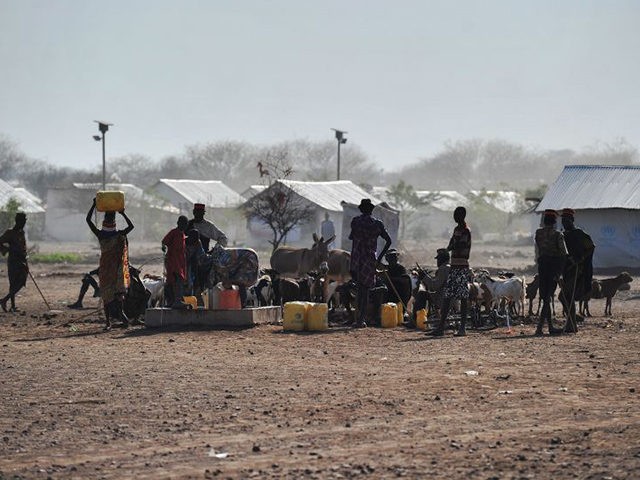The Interior Ministry of Kenya announced Wednesday it would shut down two camps populated by over 400,000 refugees, mostly from Somalia and Sudan.
Nairobi gave the U.N. Human Rights Commission (UNHCR) two weeks to create a “road map” for evacuating the refugees.
According to Voice of America News (VOA) on Wednesday, the conversation between the Kenyan Interior Ministry and UNHCR grew quite heated, as the Kenyans threatened to send hundreds of thousands of people from the Dadaab and Kakuma camps to the Somali border unless the U.N. quickly made plans to take them elsewhere:
UNHCR said it would continue the dialogue and had asked Kenya to guarantee protection for the refugees.
In a statement, the agency said, “The decision would have an impact on the protection of refugees in Kenya, including in the context of the ongoing COVID-19 [Chinese coronavirus] pandemic.”
Fred Matiang’i, the interior minister who issued the ultimatum, said there was “no room for further negotiations,” according to the ministry on Twitter.
Kenya has long seen the camps as a security threat and so do U.N. officials and many of the residents. Kidnappings and bombings have been perpetrated at the overcrowded camps and incoming waves of Somalis have unleashed epidemics of diseases like cholera. Sexual abuse, including rape and female genital mutilation, is rampant in the camps, while armed gangs have targeted both refugees and aid workers. Violence has broken out between local tribes and refugees.
Terrorist organizations like al-Qaeda and Somalia’s al-Shabaab recruit from the displaced populations, including the foot soldiers used for bloody terrorist attacks like the Westgate Mall siege in 2013 and the Garissa University slaughter in 2015.
The Kenyan government tried to close the camps in 2015 and 2016 on national security grounds, claiming Dadaab in particular had “lost its humanitarian nature and become a haven for terrorism and other illegal activities.”
International human rights groups and the United Nations criticized the move initially and the Kenyan high court ultimately halted it in 2017, ruling the shutdown order “specifically targeted Somali refugees” in an act of “group persecution” that was “excessive, arbitrary, and disproportionate.”
It was not immediately clear why the government expected its new shutdown order to fare better at the high court. Perhaps the inclusion of the Kakuma camp, with a current population of about 190,000 refugees largely from South Sudan, will be enough to deflect legal challenges that attack the order as “group persecution” against Somalis, or the government feels the security situation has deteriorated enough that judges will no longer regard the order as arbitrary or disproportionate.
The Dadaab refugee complex, which dates back to 1991, was the largest such facility in the world at its peak and would have been considered one of the largest cities in Kenya if the population was Kenyan.
Reuters noted the shutdown order comes at a moment of severe tension between Kenya and Somalia, which broke off diplomatic relations with its neighbor last December, accusing the Kenyans of meddling in Somali politics.
Kenya and Somalia also brought a maritime border dispute before the International Court of Justice this week, potentially affecting their respective national boundaries in an area believed to be rich in oil and natural gas. The Kenyan interior ministry told Reuters the camp closings are not intended to bring diplomatic pressure against Somalia.
UNHCR urged the Kenyan government to make sure that “suitable and sustainable solutions” can be found for residents of the shuttered camps and complained about the “short timeframe” given for the relief agency to make plans.

COMMENTS
Please let us know if you're having issues with commenting.